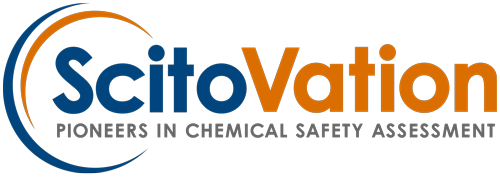Posted by Leslie Recio, PhD DABT
Like all the biological sciences, the genomic revolution has significantly impacted the science and practice of toxicology. Although regulatory toxicology relies on animal studies for use in risk assessments, there is an ongoing shift to non-animal test methods and use of genomic tools in the safety assessment of new drug candidates and environmental chemicals that is revolutionizing the practice of toxicology. Investigative toxicologists have integrated genomic tools into traditional toxicology study designs with the aim of transitioning away from observational toxicology endpoints in animals to the interrogation of genomic responses when cells or tissues are exposed to xenobiotics. Investigative toxicology focused mode-of-action (MOA) studies using genomic profiling to quantify the cellular transcriptome response referred to as toxicogenomics has matured enabling the implementation of these MOA genomic technologies to characterize MOA-based dose response relationships and ultimately their use in risk assessment.
Toxicogenomic studies have demonstrated that cells and tissues respond to cellular stressors by dose-responsive hierarchical activation of mRNA networks that can be directly quantified and parallel apical responses of cell and tissues to toxic stressors measured in traditional toxicology studies. MOA-based toxicogenomics studies have led to the identification of biomarkers useful for in vitro to in vivo extrapolation, gene ontology driven cross species extrapolations, and identification of common or divergent response pathways between rodent and humans. Genomic profiling-based in vivo studies integrated with traditional toxicology endpoints have provided insights into MOA and has demonstrated that genomic based benchmark dose (BMD) is highly correlated with apical measures and that the transcriptional BMD values may be used as potential points of departure (POD) for noncancer and cancer risk assessment. Several MOA-based signature gene sets have been identified that are associated with rodent liver toxicants and other target tissues that act through nuclear receptors, oxidative and genotoxic stress, apoptosis, as well as panels of genes involved in drug metabolism, peroxisome proliferation and alterations in cell cycle. MOA based toxicogenomic endpoints are defining key events leading to potential adverse outcomes that can be used to derive BMD and POD and more accurate risk assessments.
Scitovation scientists have pioneered the integration of MOA based genomic pathways analysis with Physiologically Based Pharmacokinetic Modeling for use in risk assessments. As toxicology transitions away from reliance on animals, New Alternative Approaches (NAMS) that rely on in vitro cell and tissue-based models to predict potential in vivo outcomes is very challenging. The development of human-relevant in vitro cell and tissue-based models to conduct dose-response studies and calculation of BMD and POD for use in risk assessment require careful assessment of the relevance of endpoints to human health outcomes and dosimetry considerations. Scitovation scientist are implementing cell-based BMD and POD from apical and genomic endpoints with In Vitro to In Vivo Extrapolation (IVIVE) modeling to estimate potential in vivo tissue levels and predict potential outcomes in exposed rodent or in humans. IVIVE derived estimation of human equivalent dose (HED) from in vitro studies will be needed to assess relevance of in vitro findings to potential in vivo outcomes. Early IVIVE studies conducted at Scitovation have used an airway dosimetry models for 1,3-dichloropropene vapor exposures to human respiratory track primary cells at air:lung interface to predict in vivo external exposure scenarios that would produce toxic local tissue concentrations as determined by in vitro experiments. Although predicted PoD concentrations were slightly higher than PoDs determined by in vivo sub chronic studies these studies are highly encouraging and model refinement is ongoing to increase accuracy of IVIVE modeling (Moreau et al., 2022).
Although at present animal studies remain as the benchmark for risk assessments, replicate LD50 studies result in the same hazard categorization on average 60% of the time due to inherent biological or protocol variabilities. Secondly, all, or most regulatory OECD studies use a vehicle control, three test article dose levels with the top dose considered to be a maximum tolerated dose of up to 1000 mg/kg/day (~7 grams per day for a human) with significant assumptions used for extrapolation to the low part per million exposure levels experienced in the environment. Finally cost, time to complete, and animal welfare considerations prohibit running repeat studies. Risk assessment extrapolation based on three-point dose-response curves are expected to be variable with wide margins of safety. NAM based approaches overcome many of these sources of variability observed in animal studies since they can be repeated at minimal cost compared to animal studies and the 8-12 multiple dose levels used in NAMs allow accurate quantification of dose response, BMD, and POD across multiple endpoints in human relevant biological systems
In conclusion, MOA based genomic dose−response data integrated with PBPK modeling have impacted risk assessments and are a useful approach in risk assessment of environmental chemicals. As NAMs are being advanced to reduce reliance on animals, IVIVE tools are being developed to enable quantitative linkages between in vitro studies and potential in vivo outcomes. IVIVE benchmark dose calculations from cell-based hepatocyte and lung models are being used at Scitovation to extrapolate in vitro exposures that could potentially lead to observed effects in rodent studies and humans.
Moreau et al., 2022 NAM-based prediction of point-of-contact toxicity in the lung: A case example with 1,3-dichloropropene. Toxicology (submitted)
